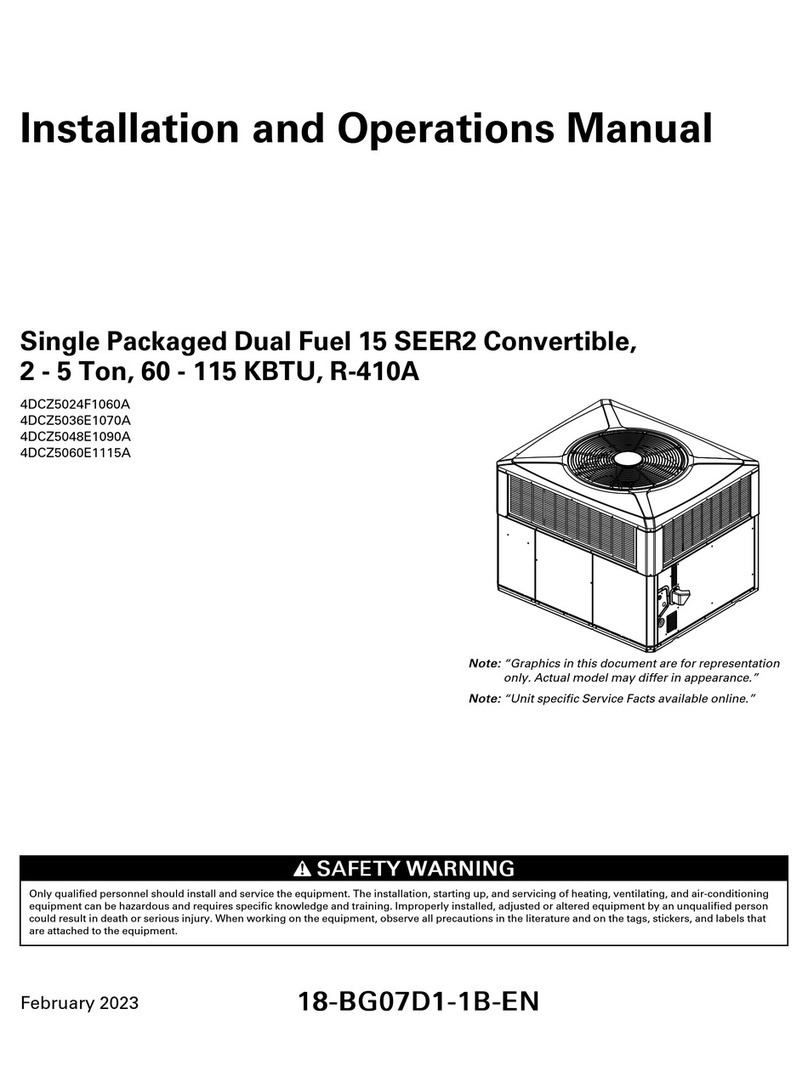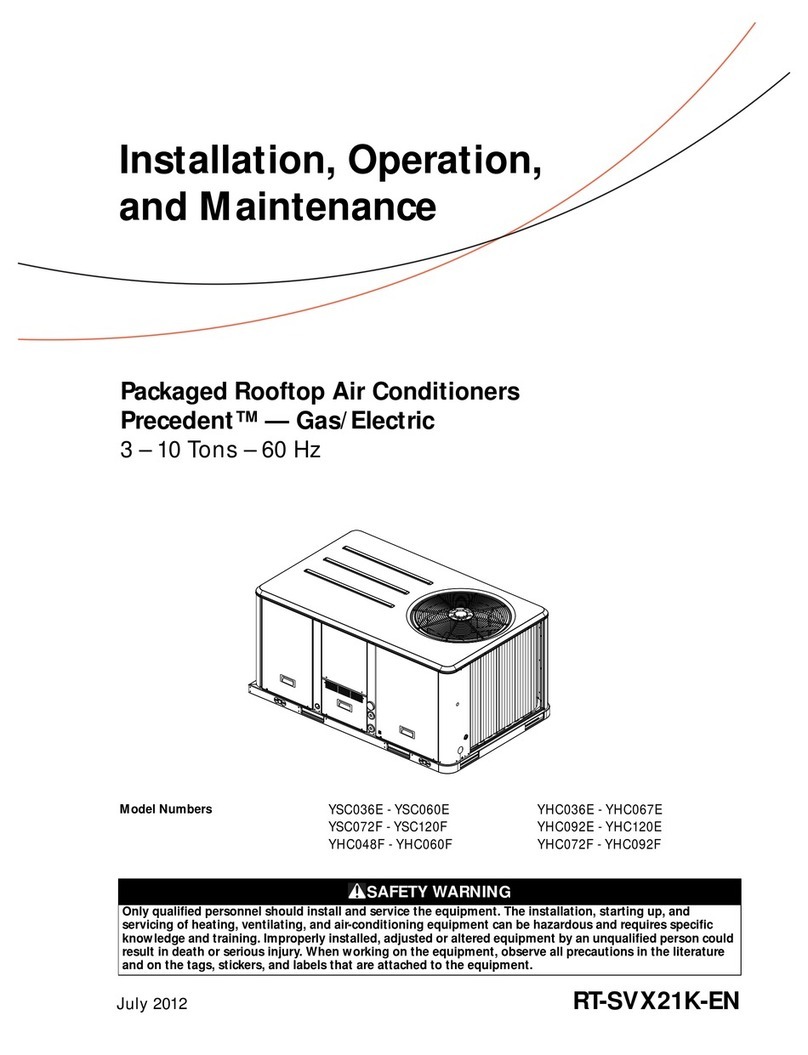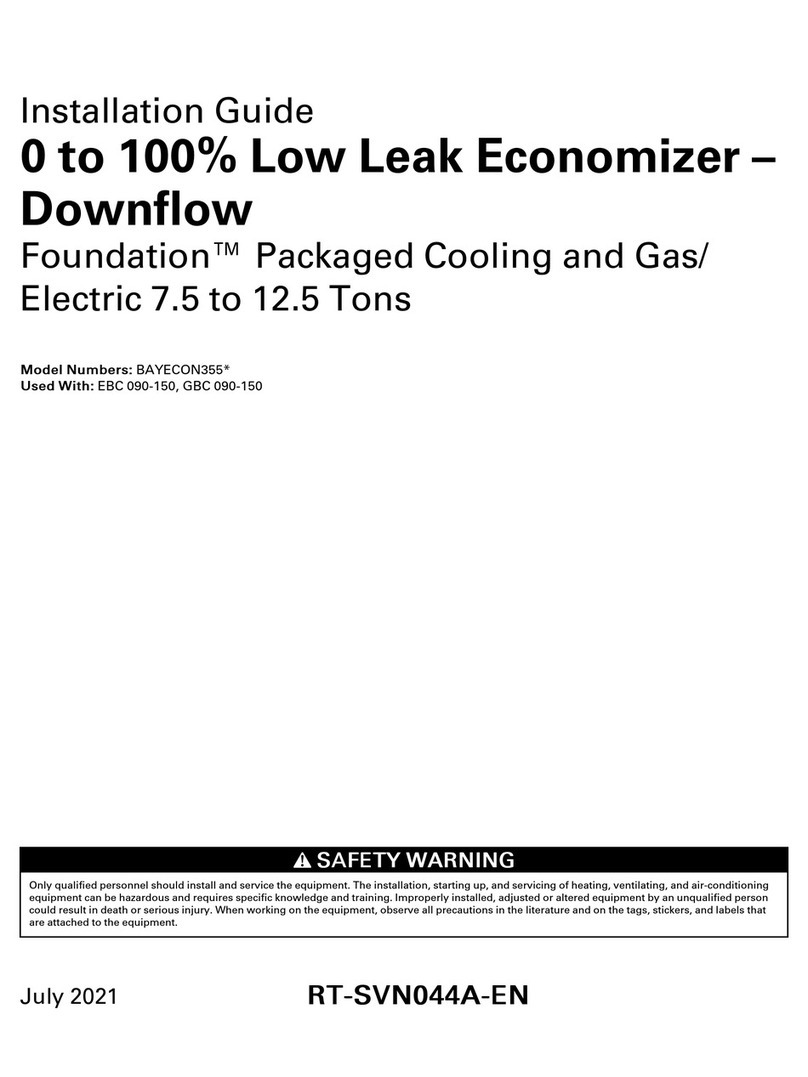Trane TRAE050 1C Owner's manual
Other Trane Air Conditioner manuals
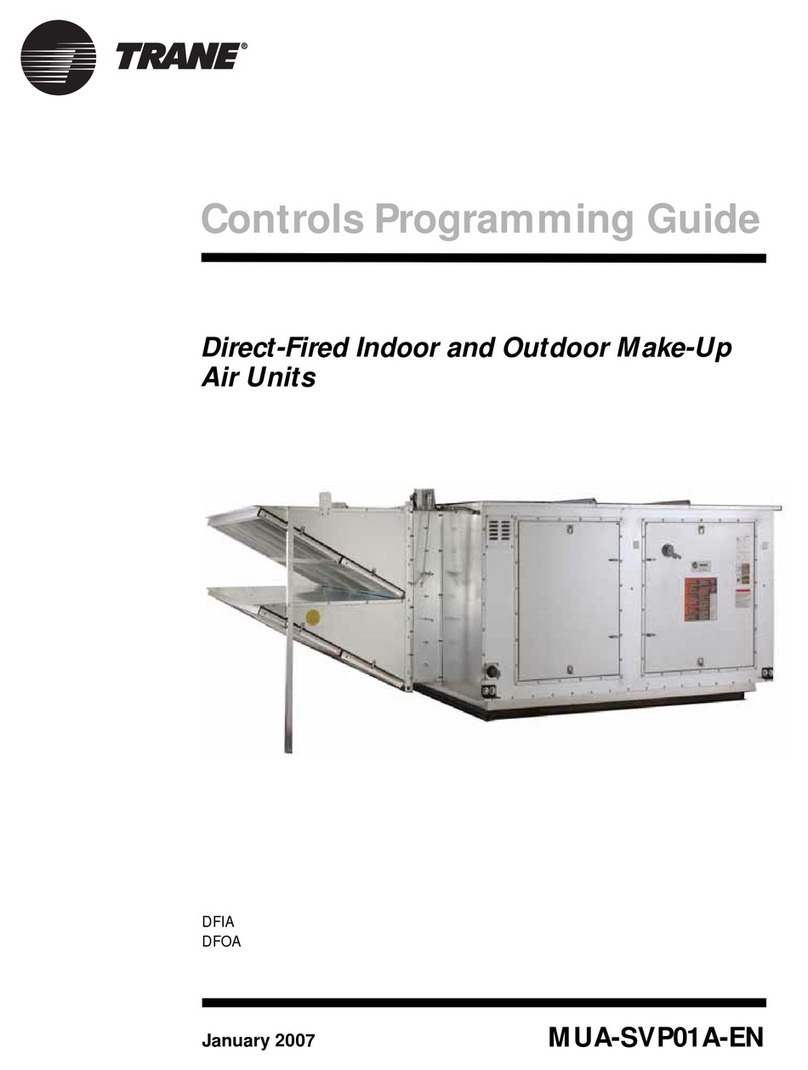
Trane
Trane DFIA Operating instructions
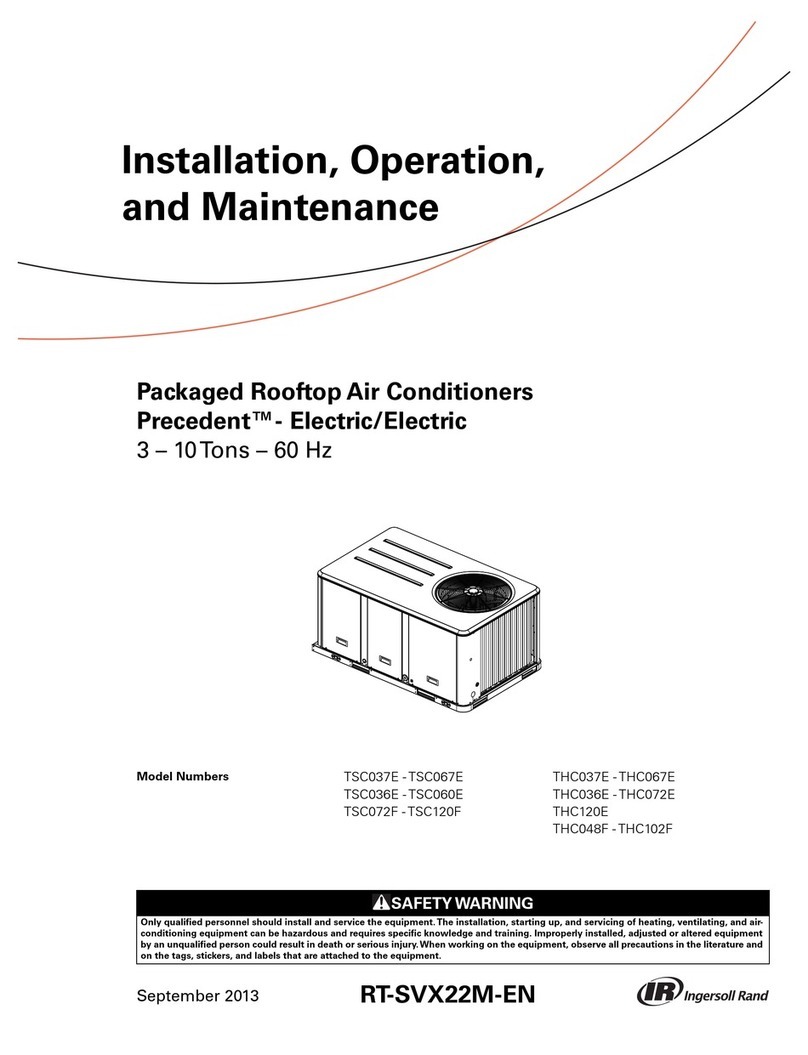
Trane
Trane TSC037E Installation and operating instructions
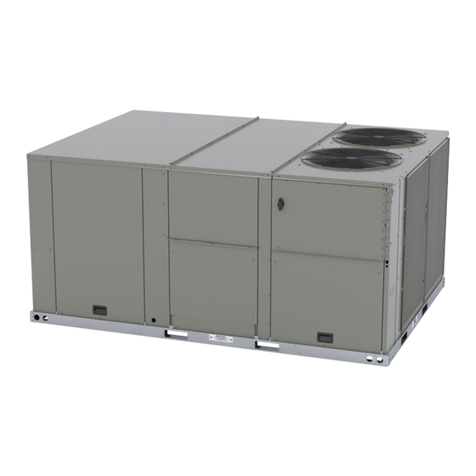
Trane
Trane Precedent YHJ072A Installation and operating instructions
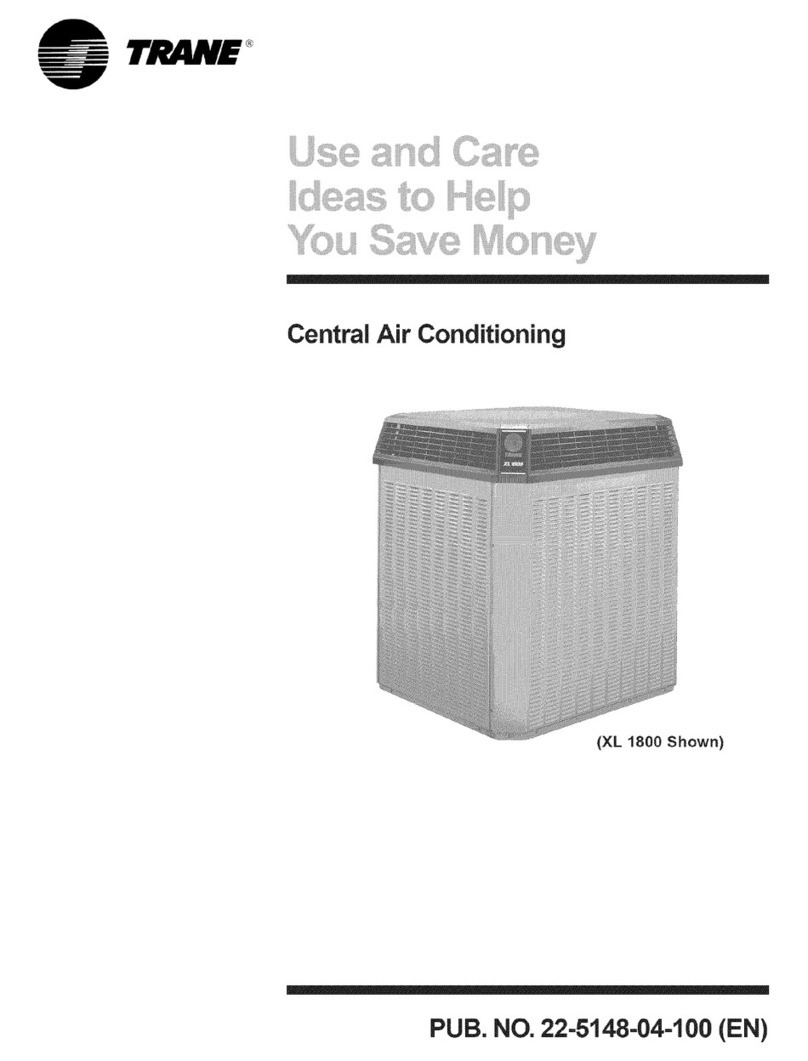
Trane
Trane TTZ048A100A1 User manual
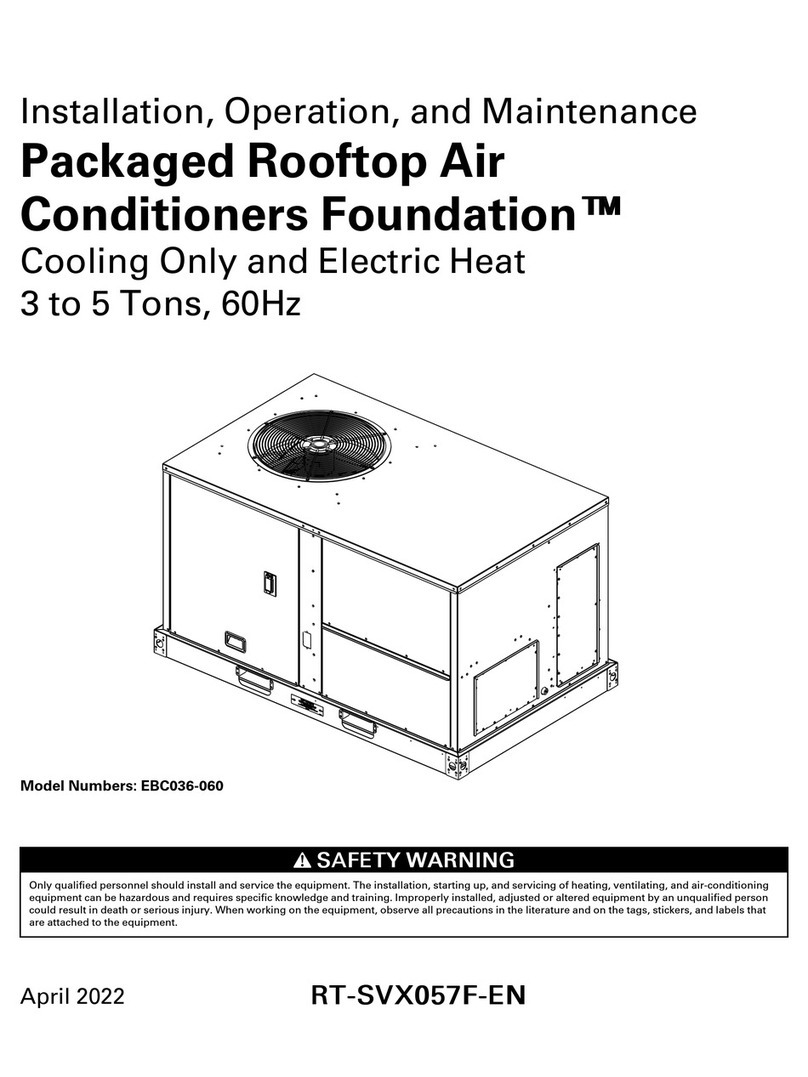
Trane
Trane EB 036 Series Installation and operating instructions
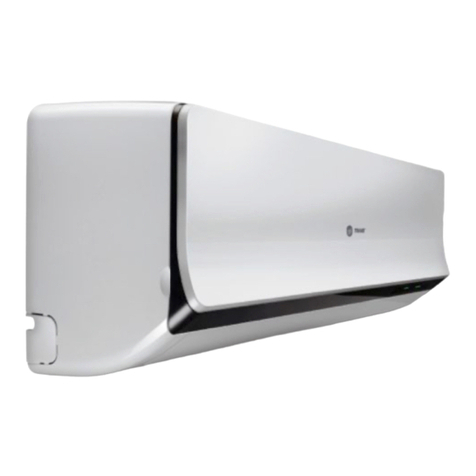
Trane
Trane R410a User manual
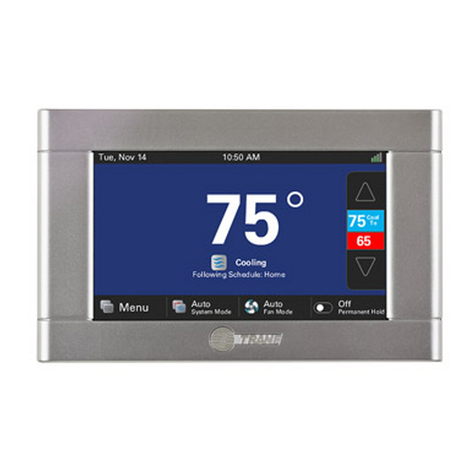
Trane
Trane Variable Speed ComfortLink II Assembly instructions

Trane
Trane ACONT900AC43UA User manual

Trane
Trane 4MYW4509A1 User manual

Trane
Trane CONTURA 3G CASSETTE User manual

Trane
Trane BFSL Quick start guide
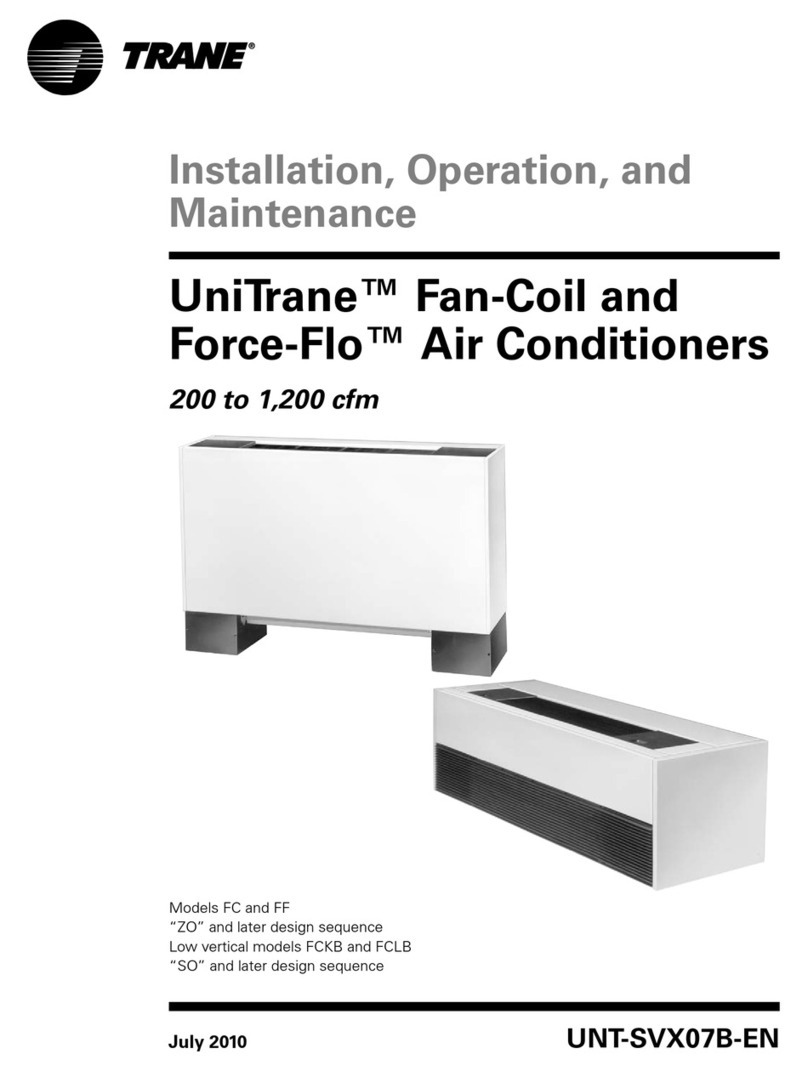
Trane
Trane UniTrane Manual
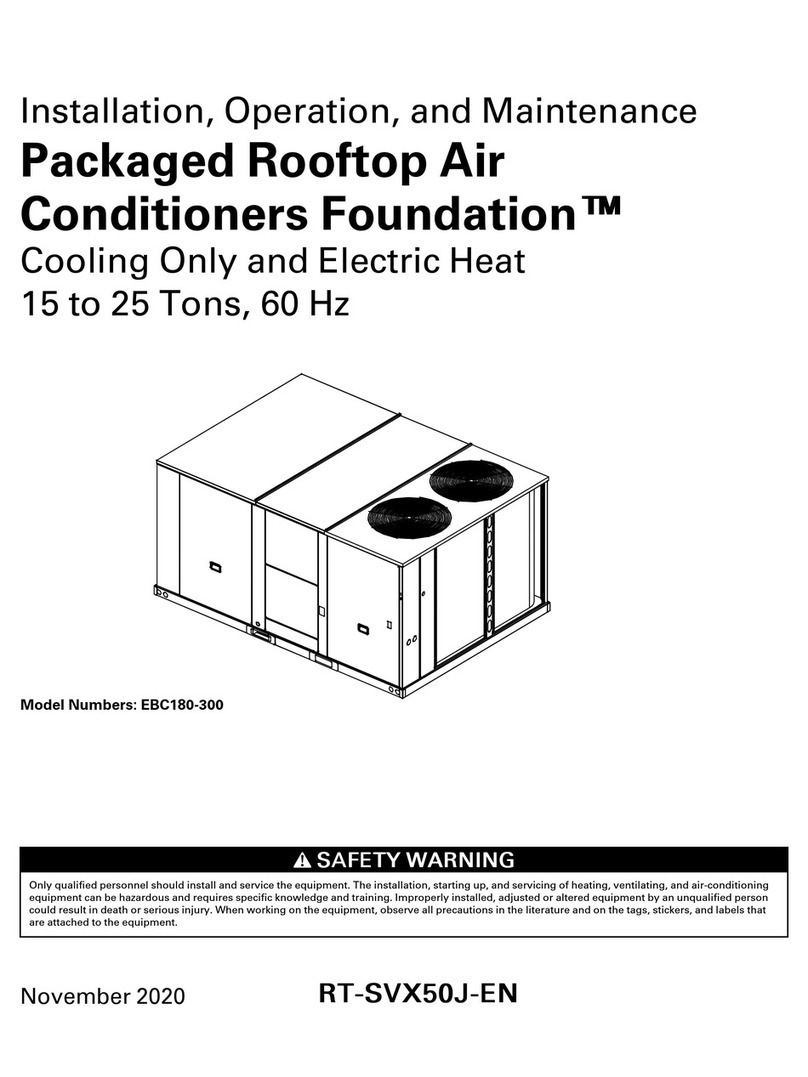
Trane
Trane Foundation EBC180 Installation and operating instructions
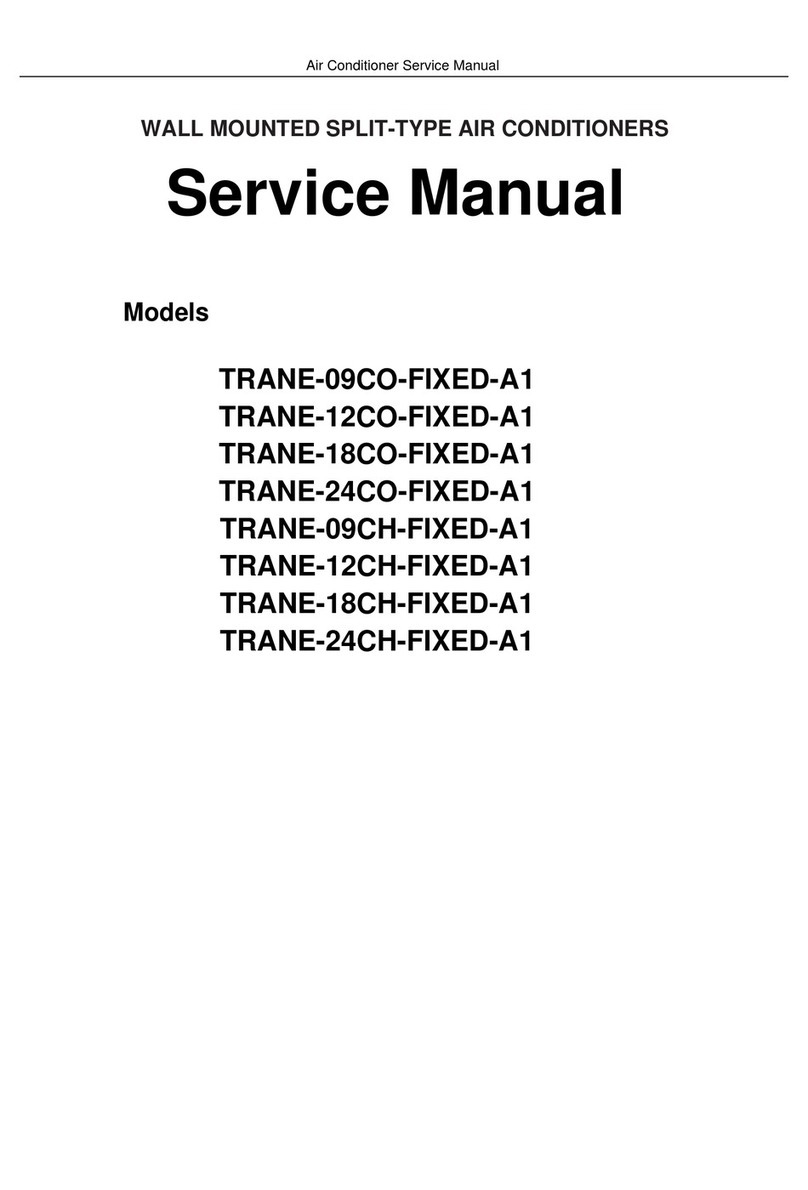
Trane
Trane 09CO-FIXED-A1 User manual
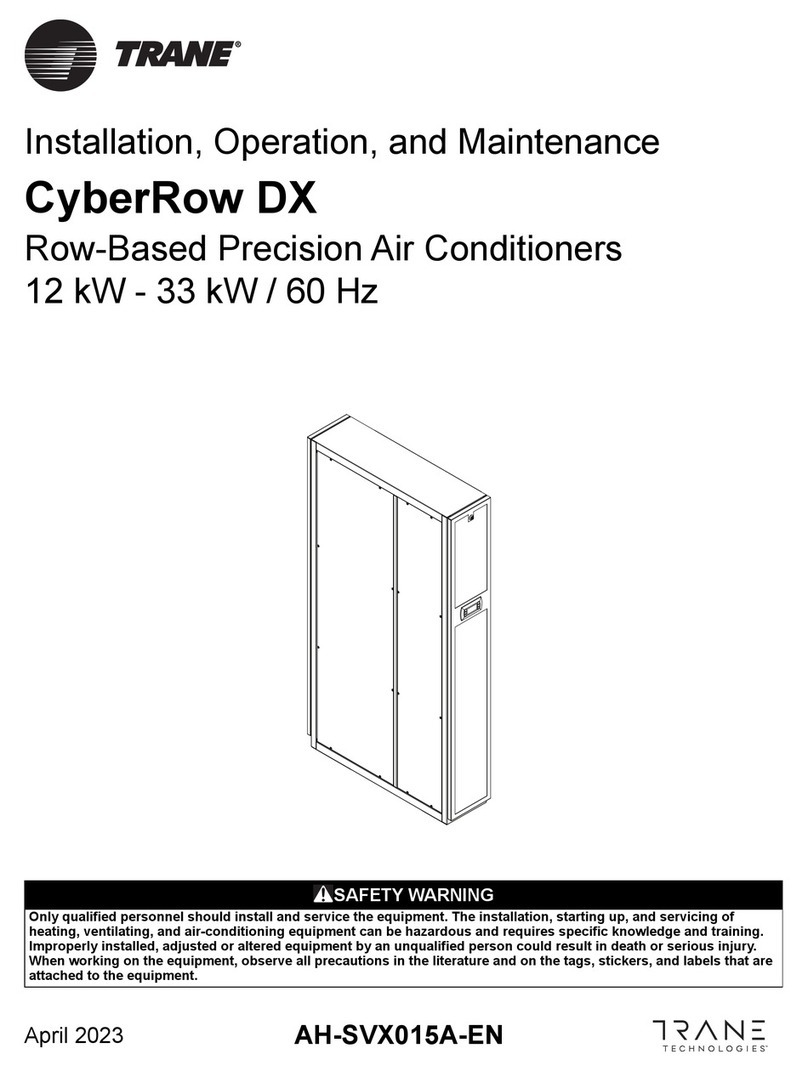
Trane
Trane CyberRow DX Installation and operating instructions

Trane
Trane CAP 0251 User manual
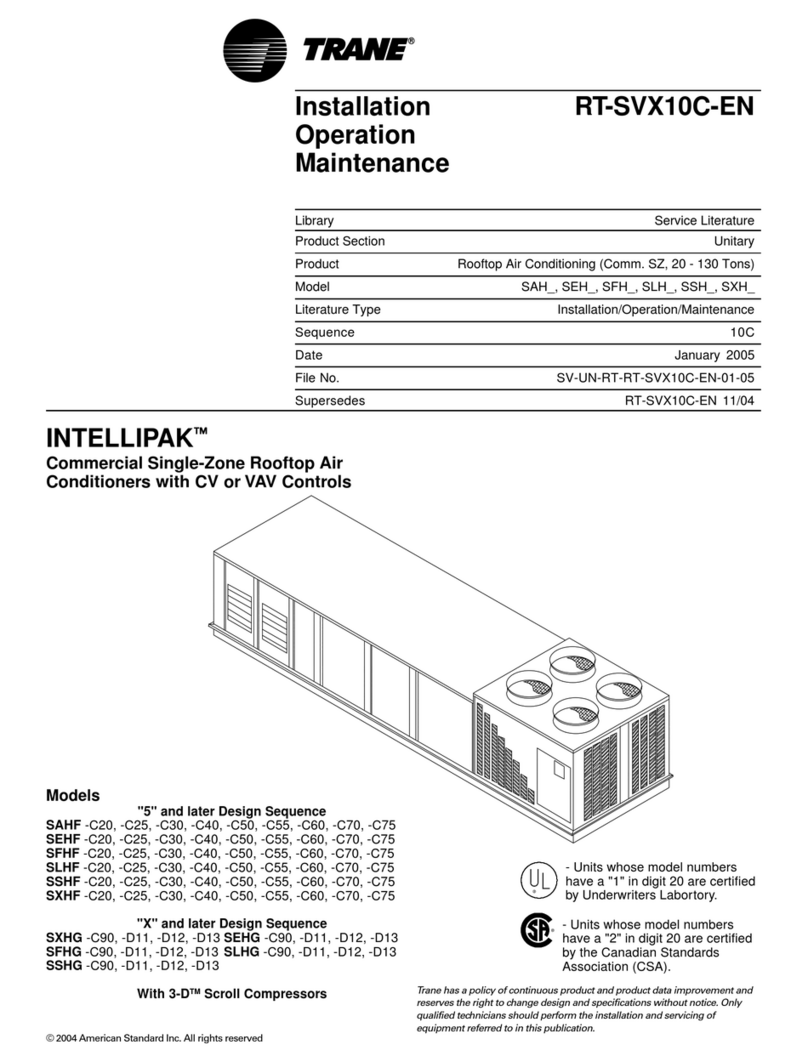
Trane
Trane INTELLIPAK RT-SVX10C-EN Installation guide
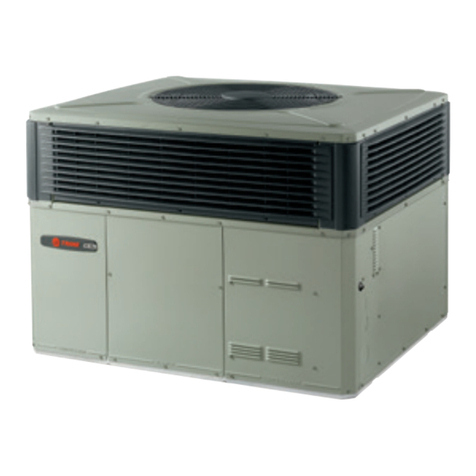
Trane
Trane 4DCY4024 Assembly instructions
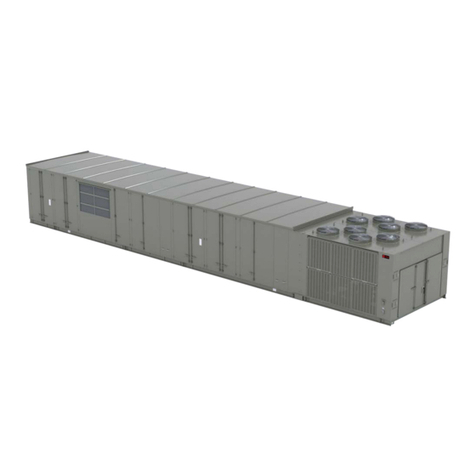
Trane
Trane IntelliPak 2 Installation and operating instructions
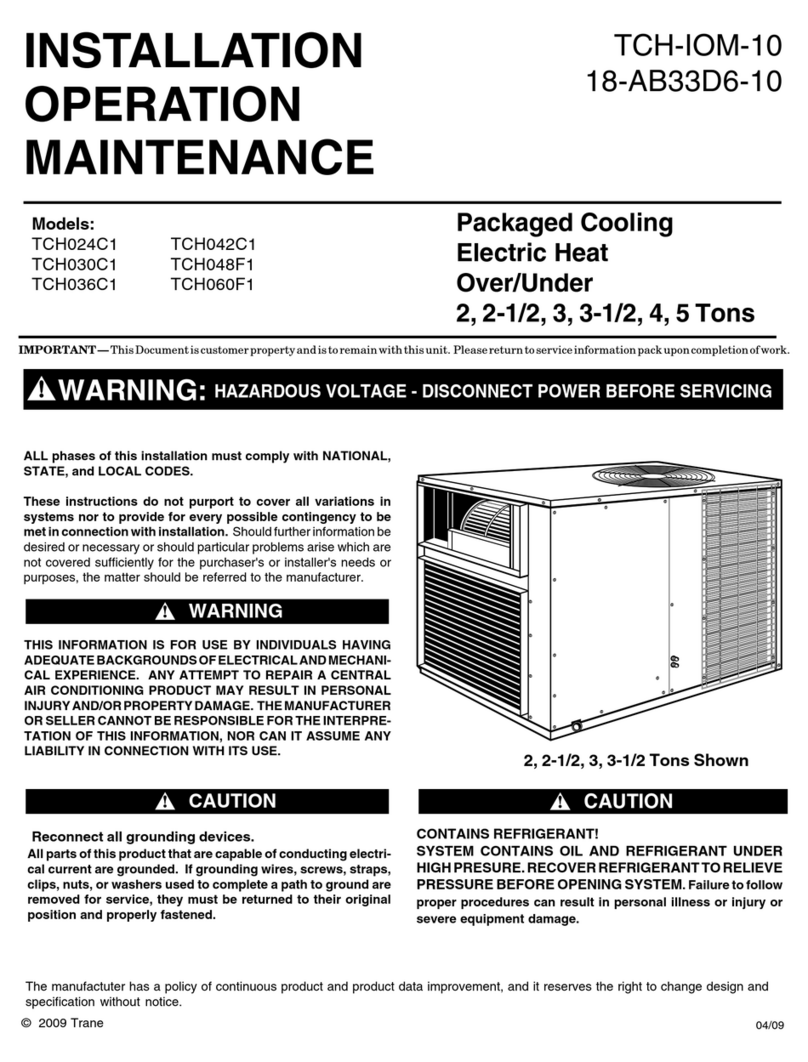
Trane
Trane TCH024C1 Owner's manual
Popular Air Conditioner manuals by other brands

Fujitsu
Fujitsu ASYG 09 LLCA installation manual

York
York HVHC 07-12DS Installation & owner's manual

Carrier
Carrier Fan Coil 42B Installation, operation and maintenance manual

intensity
intensity IDUFCI60KC-3 installation manual

Frigidaire
Frigidaire FAC064K7A2 Factory parts catalog

Sanyo
Sanyo KS2432 instruction manual

Mitsubishi Electric
Mitsubishi Electric PUHZ-RP50VHA4 Service manual

Panasonic
Panasonic CS-S18HKQ Service manual

Panasonic
Panasonic CS-E15NKE3 operating instructions

Gree
Gree GWH18TC-K3DNA1B/I Service manual

Friedrich
Friedrich ZoneAire Compact P08SA owner's manual

Daikin
Daikin R32 Split Series installation manual
